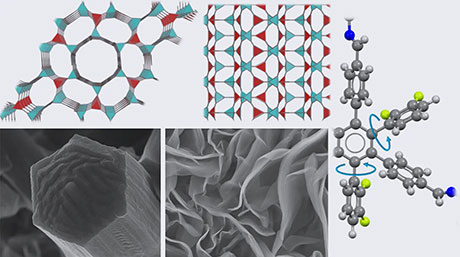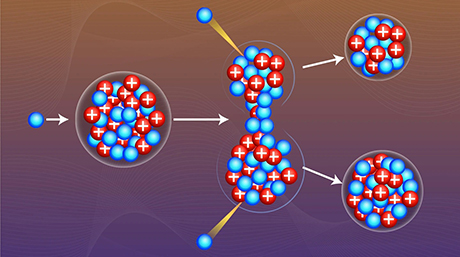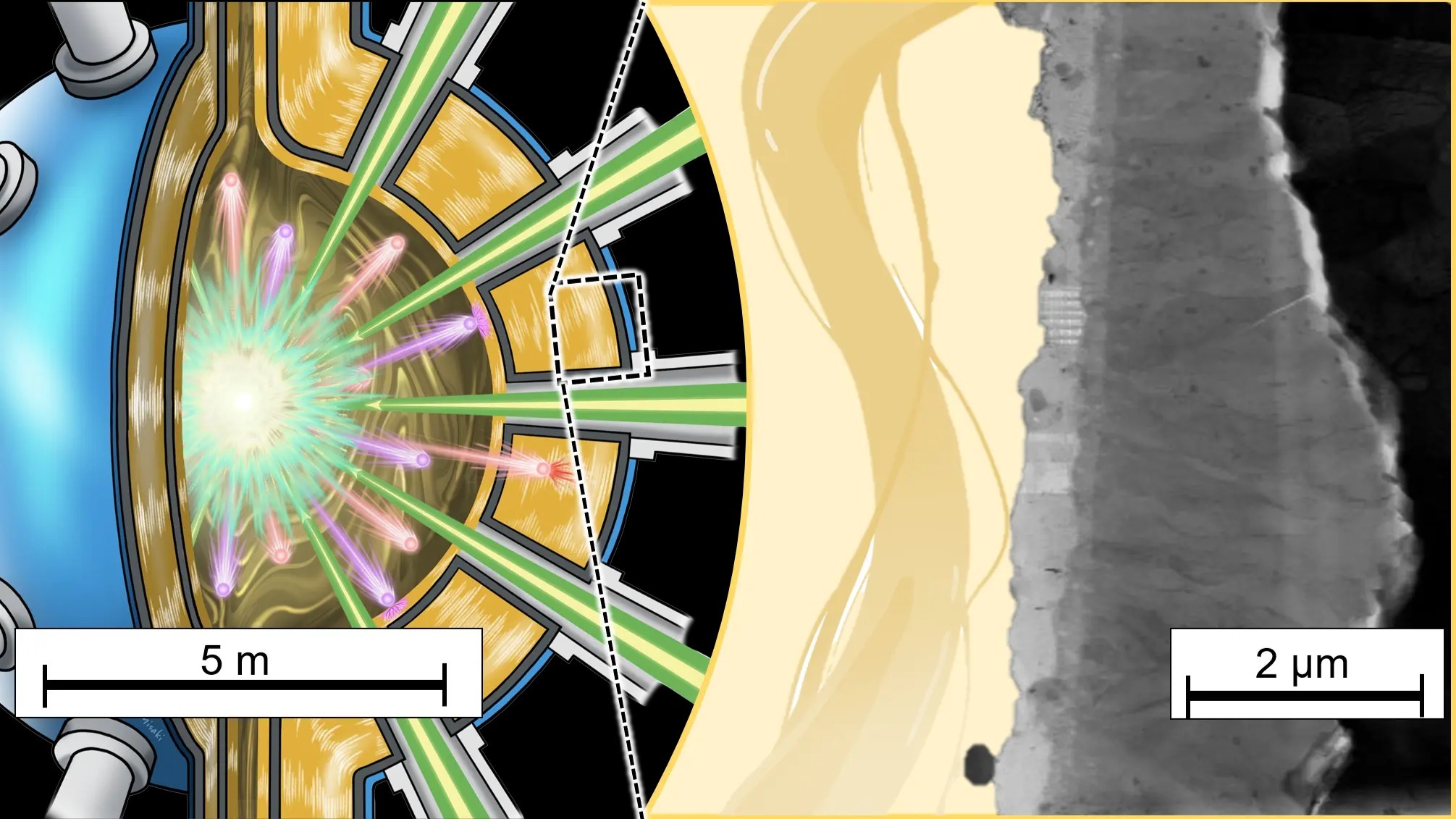Transdisciplinary Science and Engineering News
Technetium-98 nuclear cosmochronometer synthesized by supernova neutrinos
A team of researchers has theoretically predicted that an unstable isotope Technetium-98 (98Tc) could be synthesized by neutrinos emitted from supernova explosions.
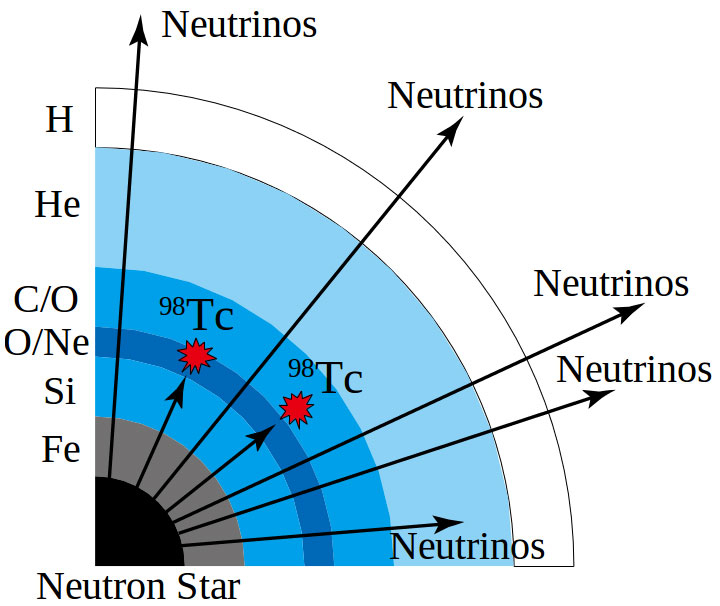
Figure 1. Element production by neutrinos emitted on supernova explosion
A large number of neutrinos are emitted from the proto-neutron star formed during an early phase of a core-collapse supernova. When these neutrinos pass through the outer layers, they partially deposit their energy in the outer layers, leading its supernova explosion. In the outer layers, some nuclides such as Tantalum-180 are newly synthesized by the neutrino-nucleus interaction. There are six neutrino species, electron neutrino, muon neutrino, tau neutrino, and their anti-neutrinos.
Previous studies have shown that the neutrino-isotopes are predominantly produced by five neutrino species except the electron anti-neutrino. If there was a neutrino-isotope synthesized predominantly by the electron anti-neutrino, one could estimate the temperature of the six neutrino species, which are important for understanding the supernova explosion mechanism.
At the present study, first, it was found the possibility that 98Tc may be synthesized by the neutrino process.
Next, the expected 98Tc abundance was calculated using a supernova explosion model with the neutrino-nucleus interactions involved.
As a result, it was found that 98Tc neutrino-process nucleosynthesis is the large contribution (~20%) from charged current reactions with electron anti-neutrinos. It was shown that if the initial abundances of 98Tc were to be precisely measured, the 98Tc nuclear cosmochronometer could be used to evaluate the initial abundance of 98Tc and the duration time from the last core-collapse supernova to the formation of the solar system.
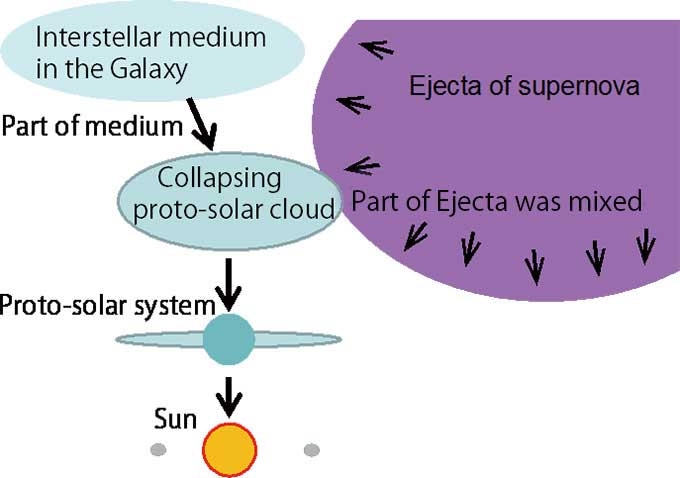
Figure 2. Substances formed in supernova are drawn together into the proto-solar system
The present result is also important for the average temperatures of the six neutrinos and astronomical observation of the electron anti-neutrino.
This work will be published in Physical Review Letters.
Reference
| Authors : | Takehito Hayakawa1,2,*, Haemin Ko3, Myung-Ki Cheoun3, Motohiko Kusakabe4, Toshitaka Kajino2,4,5, Mark D. Usang6, Satoshi Chiba6, Ko Nakamura7, Alexey Tolstov8, Ken'ichi Nomoto8, Masa-aki Hashimoto9, Masaomi Ono10, Toshihiko Kawano11, Grant J. Mathews12 |
|---|---|
| Title of original paper : | Short-Lived Radioisotope 98Tc Synthesized by the Supernova Neutrino Process |
| Journal : | Physical Review Letters |
| DOI : | 10.1103/PhysRevLett.121.102701 |
| Affiliations : |
1National Institutes for Quantum and Radiological Science and Technology, Japan 2National Astronomical Observatory of Japan, Japan 3Soongsil University, Korea 4Beihang University, China 5The University of Tokyo, Japan 6Tokyo Institute of Technology, Japan 7Fukuoka University, Japan 8Kavli Institute for the Physics and Mathematics of the Universe (WPI), The University of Tokyo, Japan 9Department of Physics, Kyushu University 10RIKEN, Japan 11Theoretical Division, Los Alamos National Laboratory, USA 12University of Notre Dame, USA |
- New model considers an extra factor to improve our prediction of nuclear fission | Tokyo Tech News
- A fast reactor system to shorten the lifetime of long-lived fission products | Tokyo Tech News
- Dynamics of nuclear fission at low excitation energy | Tokyo Tech News
- S. Chiba Laboratory
- Researcher Profile | Tokyo Tech STAR Search - Satoshi Chiba
- Laboratory for Advanced Nuclear Energy
- Institute of Innovative Research (IIR)
- National Institutes for Quantum and Radiological Science and Technology
- NAOJ: National Astronomical Observatory of Japan
- Kavli Institute for the Physics and Mathematics of the Universe
- Kyushu University
- RIKEN
- Soongsil University
- Beihang University
- The University of Tokyo
- Fukuoka University
- Theoretical Division, Los Alamos National Laboratory
- University of Notre Dame
- Latest Research News
Contact
Public Relations Section, Tokyo Institute of Technology
Email media@jim.titech.ac.jp
Tel +81-3-5734-2975

